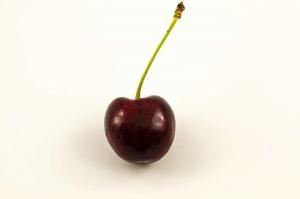Starting your indoor garden: What to pot plants in
Are you starting your own indoor garden but don't know what to pot your plants in? Don't worry, we've got you covered. Making sure your plants are potted in the right materials is essential for their growth and overall health. In this article, we'll discuss some of the most common options for indoor plant pots and their advantages and disadvantages.
Option 1: Terracotta Pots
Terracotta pots are a classic and popular choice for planting your indoor plants. These pots are made from clay and are widely available in various sizes and shapes. They are porous, allowing air and water to pass through, which can help prevent root rot.
The downside of terracotta pots is that they dry out quickly, which means you'll need to water your plants more frequently. They are also prone to cracking in extreme temperatures or if dropped.
Option 2: Plastic Pots
Plastic pots are lightweight, affordable, and come in a variety of colors and designs. They are also long-lasting and do not crack easily. Unlike terracotta pots, plastic pots retain moisture, which means you won't have to water your plants as frequently.
The downside to plastic pots is that they are not as breathable as terracotta pots, which can create drainage problems and lead to root rot if not monitored. They also do not provide as much insulation against extreme temperatures.
Option 3: Ceramic Pots
Ceramic pots are a beautiful and stylish option for potting your indoor plants. They come in a range of colors, designs, and sizes and offer great insulation against extreme temperatures. They are also durable and long-lasting.
The downside of ceramic pots is that they are heavy and may not be as porous as terracotta pots, which can lead to drainage issues and root rot. They are also more expensive than other potting options.
Option 4: Self-watering Pots
Self-watering pots are a unique option for those who may not have the time or energy to water their plants frequently. These pots have a reservoir at the base that can hold water, and the soil absorbs moisture through a wicking system. This allows the plant to water itself slowly over time, which is great for plants that require consistent moisture.
The downside of self-watering pots is that they can be harder to find and are more expensive than other options. They also require careful monitoring to ensure the plant does not become overwatered or rootbound.
Option 5: Fabric Pots
Fabric pots are a newer option that have gained popularity in recent years. These pots are made from breathable fabric materials that allow air and water to pass through easily. They are also lightweight and flexible, making them easy to transport and store.
The downside of fabric pots is that they may not be as visually appealing as other options and do not provide as much insulation against extreme temperatures. They also require careful monitoring of moisture levels and may need to be replaced more frequently than other potting options.
Conclusion
When it comes to potting your indoor plants, there are many options to choose from, each with their own advantages and disadvantages. Consider your plant's specific needs, your budget, and your personal aesthetic preferences when selecting a potting option. With the right potting materials and care, your indoor plants will thrive and bring life to your home or office.

 how many times do yo...
how many times do yo... how many planted tre...
how many planted tre... how many pine trees ...
how many pine trees ... how many pecan trees...
how many pecan trees... how many plants comp...
how many plants comp... how many plants can ...
how many plants can ... how many plants and ...
how many plants and ... how many pepper plan...
how many pepper plan...































